66 degrees, 33 minutes latitude north. Arctic Circle. The motorcycle is buried in a trail of mud and snow, and at your feet you feel the veins of ice underneath the surface. The wind blows furiously. It’s howl invades the arctic tundra. It whimpers for a while. Then it stops. Then again it whines as if wanting to frighten us from that gloomy place plunged in desolation. The sun still shines, however the cold air slices the flesh and cuts your bones. There is not a soul in 150 miles around. It is two in the morning.
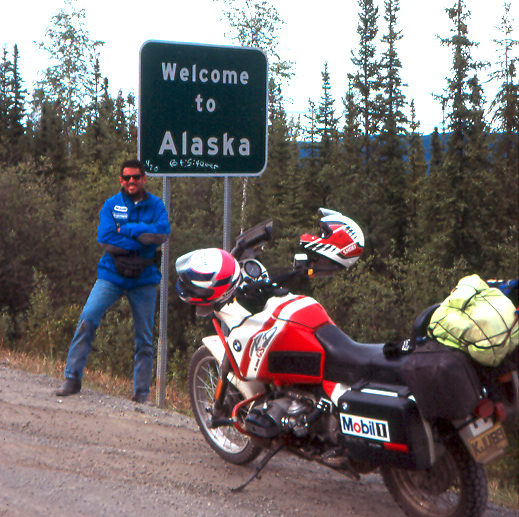
We arrived at Nanaimo, a modest fishing port south of Vancouver Island (Canada) aboard a huge ferry boat with hundreds of tourists and their opulent mobile homes. Upon our arrival, in the wild race to get the few provisions and gallons of gas at the only store, we all looked like locusts raiding the last corn crop. We shopped for the last spare parts we needed for the bike so we could handle the second part of our journey which had started in Bogota, Colombia and taken us all the way along Central America and the southern U.S. Now, 300 miles separated us from Port Hardy, where we were to load the bike in a cargo ship, and sail the freezing waters of the north Pacific. The BMW had a range of approximately 200 miles and there were no gas stations along the way. Anyway we took the chance, and with the help from someone upstairs made it barely to Port Hardy across spellbinding scenery.
The journey is a living postcard. A rough sea winding through glaciers and mountains, gives way to weary fishing boats, anxious to come home with their succulent rewards of tuna and salmon. Near the Charlotte Islands the fiords begin to appear, monuments of time frozen millions of year ago. The humpback whales live here. Their sovereign tales can be seen from afar, pounding the sea vigorously, warning those intruders who dare to trespass the limits of their sanctuary. Here a new breed of adventurers lower their fiber glass kayaks and embark in wild odysseys that last for weeks. Hidden behind the morning fog, Bela Bela comes to view in the horizon. It is a tiny village that the least rigorous maps never register. After sixteen hours the SS Queen of the North docks in Prince Rupert.
Prince Rupert, founded in 1910, is a new born town. Its people reflect a mosaic of cultures; the native heritage of the totems, the subtle taste of Asia, the deep colors of the Mediterranean, and the adventurous spirit of North America. Sikh missions, the Pentecostal Tabernacle, the Church of the Holy Child and Taoist temples, added to more than 15 religious groups of the natives, complete this multicolored picture.
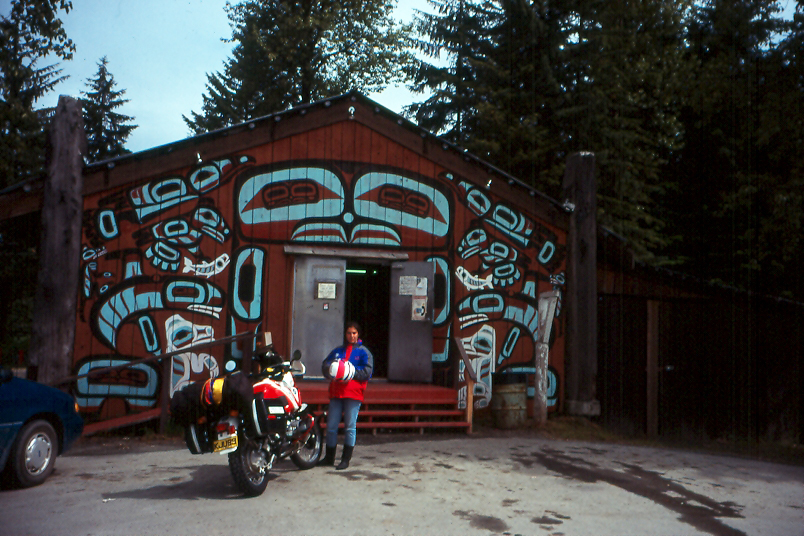
The majestic Bear glacier appears as a biblical vision in the middle of the road. It is heard and felt when hundreds of tons of ice fall into a deafening crash. Glacial ice has been here since the dawn of time. Adead, more than 12 smaller glaciers, one by one, signal the way to Steward, a town of no more than 800 inhabitants embedded in a deep valley. It was built by the gold rush at the beginning of the twentieth century, but today it is in oblivion like any ghost town. In its only hotel, stranded in time, a bearded old man, stuck to a bottle of Jack Daniel ́s, told us his many stories around life in the mines. The few gold nuggets that he was able to find up in the Klondike were spent wisely in booze, women and cards with his only friend Jonas Kipling. We never knew if Jonas Kipling was his mule or someone else. As a lonely background in the hotel ́s lobby, there were a few old pans, pikes and shovels hanging altruistically on the worn walls.
Before we found the road sign that said “Welcome to the Yukon, the forgotten land” we found bear foot prints crossing the road. The old man at the hotel had warned us that these bears were specially attracted by women sodors, sun lotions and shampoos and that if we ever saw one avoid any eye contact because this made them feel uneasy. We confirmed that we were not alone: out of the blue a man in his early sixties, bald and big bellied, appeared riding a bicycle full of lights, junk, pots and pans and useless stuff, all the way from Southern California. We took a picture together and each one continued our own way. The pine trees that had accompanied us during so many miles vanished and if by magic, its green and pleasant smell became ocre and dust.
The sign said “Good Hope, population 12”. We had reached the land of the Kaska Denna indians whose ancestors “inhabited this region since the first day”. The Kaska Nation is outlined by the basin of the Liard river and the Rocky Mountains of the Findlay river up to the Peace river. They have their own tongue and their own laws and they were never seduced by the bewitchments of civilization. One of their wise men, old Muncho, roasted and wrinkled as a raisin, with his white hair held together in a long braid, came towards the red R100 GS-PD parked in front of his hut. Instantly, a confrontation of one thousand years occured. A clash between yesterday and today. The old man was shocked with the latest BMW technology and we were shocked by this man ́s inherent struggle for survival that could be seen through his eyes. Today, the same as twelve other tribes or nations of the Yukon, the Kaska people are screaming for their cultural and territorial independence.
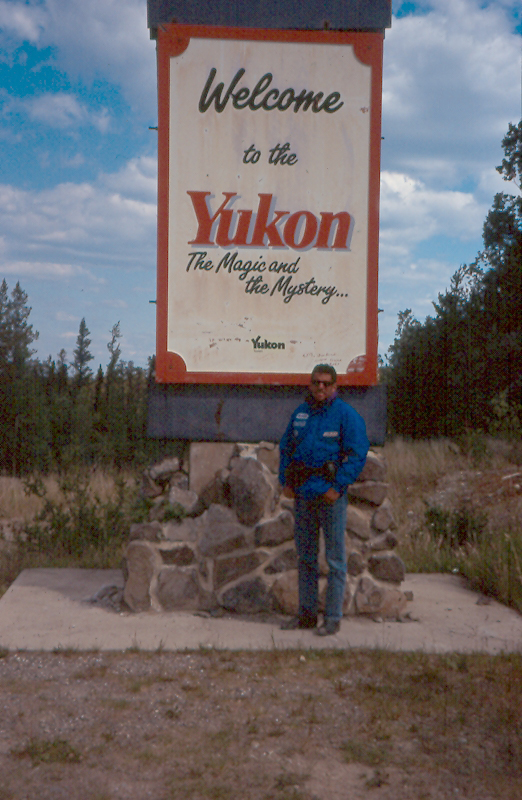
Several years back, I was inspired by the National Geographic photograph that showed a plump and smiling old lady standing in front of the famous Watson Lake post signs. Today more than 24.000 signs have been brought from all over the world. Signs with names of counties, states, provinces and countries are hung as a tourist attraction in the corner of the town ́s main street. It is said that most of these have been stolen from the place of origin so, if true, it would make Watson Lake a Guiness World record candidate for being the place with the largest amount of stolen property in the world. Finally, after many days and many miles, the first sign of “Bogota-Colombia” was hung in place and the story of a couple of colombian motorcyclists passing by, registered in the history of this town.
The Alcan (Alaska-Canada Highway) goes through Watson Lake. It is a 1500 mile road that links the Yukon with Alaska. It was built in less than one year with more than 3000 men from the american and canadian armies, all working under extremely harsh conditions, braving raging winter storms, eager to prevent a japanese invasion from the north of the continent during World War II. The road freezes during the winter and the subsoil melts in the summer time destroying it completely. Fractures appear all along the surface and when you ride a motorcycle behind those huge construction trucks spilling rocks it becomes a serious health hazard.
Fortunately the BMW Paris-Dakar has light and engine protectors. Most of the vehicle that adventure throughout the Alcan go provided with steel structures that guard their lights and windshields. Alongside the road you can see small wooden cabins abandoned by gold miners at the beginning of the 1900 ́s. We went inside one and found a bed with its mattress and cover and a night table with an old kerosene lamp covered with dust, a pike, a shovel and a mule harness. Everything intact just as the miner had left it. His story is unknown like those of thousands of miners that adventured throughtout this land. History states that those who arrived to search for gold lasted a mere two years.
The Alcan Highway is very long, very tough and very cold. Finally, we made it after two destroyed set of tires, the front light and rear shock absorber broken, a ruined suitcase, a lost pair of sunglasses, one missing sleeping bag, a brand new Arai visor split, hands and knees totally swollen and numb, and our kidneys temporarily displaced from their original place. At Tok, the first major overland point of entry at the end of the route, we saw bumper stickers that said “We survived the Alaska Highway”. It was true. This is a journey you take only one way.
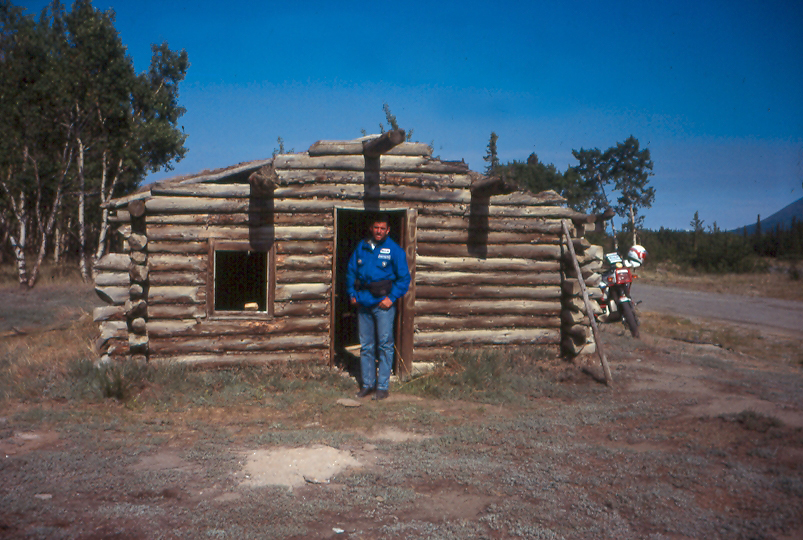

We triumphatnly entered Alaska through Beaver Creek but we never imagined that we had more than 2.000 miles ahead of us. A young eskimo told us, Alaska is larger than life and larger than dreams. It is the land of the grizzly bear, the caribou, the chinook salmon, the colorful puffins, the totem poles, the mighty rivers, the soaring peaks and sweeping landscapes. It is the last frontier. The Aleut indians call it Aleyska, the Great Land. Alaskans are the sons of many nations. They have the legacy of the Inupiat eskimos and the Inuit, Athabascan, Hayda, Tinglit and Tsimshian indians. Also, the first russians and mongols that came to America long before Colombus across the Bering straight. These people extended their nomad lives to regions as remote as Greenland and Iceland. They live off the land. They live in this inmensity that at first sight could never provide them anything. Here where you can only see white and snow, they hunt seals, fish through holes in the ice and hunt for bears and caribous to feed themselves with a diet rich in fat that protects them from the bitter cold. With chunks of ice they build their igloos, modest homes that they abandon without regret when they migrate to look for new sources of subsistence. Our minds, our bodies and our bike were ready to embrace this gift.
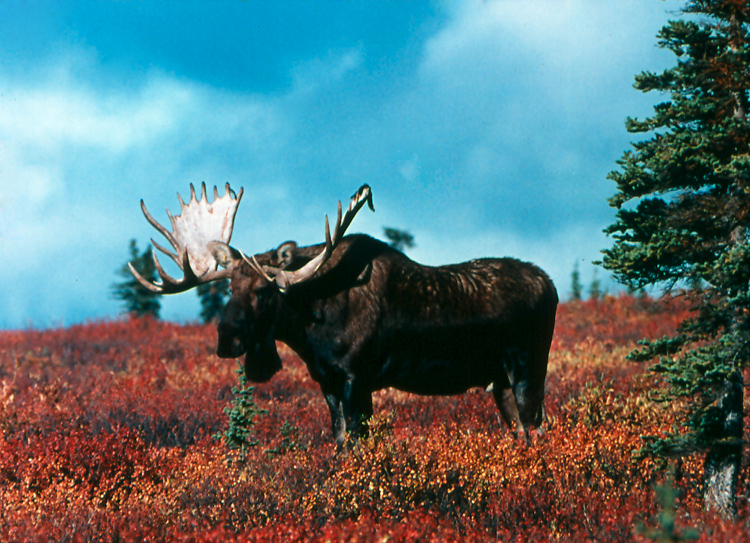
If you want to get lost this is the ideal place. Alaska is a land of unimaginable scale. Stretching across 586,000 square miles of untamed wilderness, Alaska is one fifth the size of the contiguous United States. It encompasses dozens of ecosystems from the dry tundra of the Artic to the moist rainforests of the Inside Passage, close to Juneau, its capital. In a place of such enormous variety you can even find deserts in Kobuk Valley National Park. It has 3 million lakes, 100.000 glaciers, 3.000 rivers, 1.800 islands and above all, the magical Aurora Borealis or Northern lights.
The Northern Lights appear most often in cold an clear nights between late august and april. Created by the earth ́s magnetic field, this curtain of green, yellow and red lights dance silently across the sky performing one of the most enlightning shows of nature. Alaska natives believed they saw the souls of their ancestors in these shimmering bands of lights. The bore tide is another of Alaska ́s wonders. A strong spring tide may come in so quickly that it becomes a wall of water several feet high, travelling at speeds of up to 10 knots.
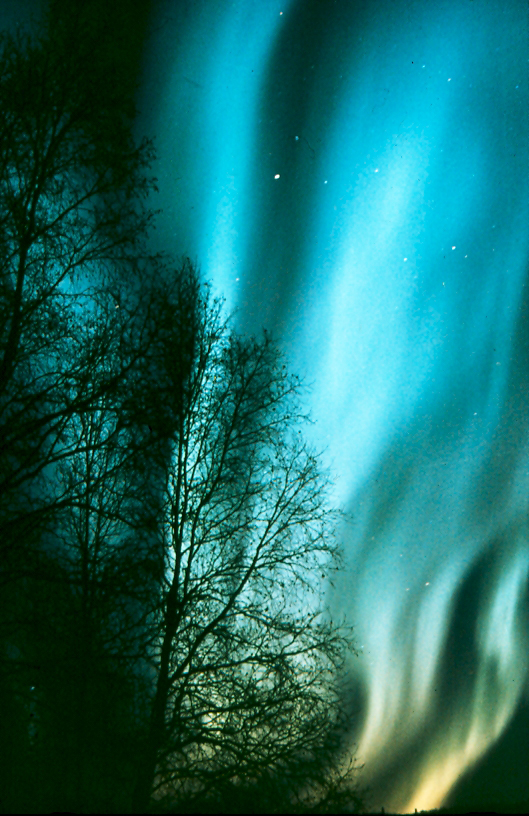
Alaska has three of the largest natural parks in The United States. The largest is ‘Gates of the Arctic National Park’, with more than 6 million acres which extends from the arctic circle to the Beaufort Sea, 450 miles south of the magnetic North Pole. Up there is where we wanted to go. The secretary of the tourist information centre in Fairbanks said that we were insane when we asked her how to get there: “The road is completely unpaved and to protect its fragil ecosystem from the dust, calcium chloride is poured on a regular basis to keep it moist”. More difficult than the Karakouram highway in Northern Pakistan? We were about to find out.
At 3 in the morning taking advantage of 24 hours of sunshine in this time of the year, we left Fairbanks, the second most important city in the state headed north. We took the paved Dalton highway to Prudhoe Bay, that runs parallel to the TransAlaska Pipeline. But our good luck lasted only for a few miles. The secretary at Fairbanks was right. The highway quickly turned into a muddy nightmare and the bike, loaded with more than 200 pounds of luggage and spare parts, was sliding and skidding from one side of the road to the other.
The off road tires we bought in Seattle were useless. Cristina had to walk beside me. Its started to rain at around 7 so we decided to stop for a while. There was no shelter. No trees to escape from the freezing rain or the howling wind. Just a bare land, beautiful in its essence but gloomy for its miles and miles of desolation. We took some pictures and had a snack. There was not a soul in sight.
At noon it stopped pouring but the road was a complete mud bog. Huge ditches made it impossible to move the bike. We did not want to ride over the tundra because it is like a sponge and the bike loses all traction. We were trapped in thousands of square miles and we had no place to go. Zillions of mosquitoes filled the air and for us to be able to breath and not swallow them at the same time, had to keep our helmets on. We unpacked the BMW and tried to settle it a few feet further down the road. For almost one hour and a half we pushed and pulled it with mud up to our knees and were not able to move it one inch. I dont know how many hours went by before a couple of locals driving an old second world war jeep were able to pull us from our nightmare. We realised that our plans were about to change drastically because the only means to conquer the Arctic Sea was in a four wheel drive vehicle. Trying to reach Prudhoe Bay implied 800 more miles of the same shit. After carefully analyzing our pathetic situation and our physical and psychological wear, we sadly decided to abort our small expedition and return to Anchorage the next morning. We spent that night playing cards with our new friends in front of a large chimney in an oil exploration camp they called a hotel.
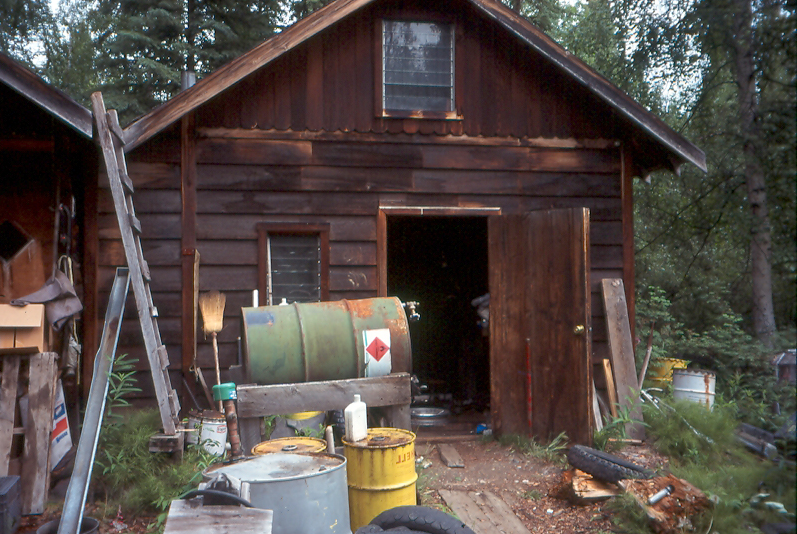
Getting back was no easy task because we had to take the same road. But we found our reward 100 miles south of Fairbanks, at Denali National Park where we saw the spectacular Mt. Mcinley, North America ́s tallest mountain. The athabascans call it Denali, which in their language means “The Great One”. If paradise exists, this place would be it. Here more than 400 species of animals share the land in harmony. Ten foot high grizzly bears walk freely with their cubs, wolves howl in the peaks, the lynx and the Dall sheep fade against the white capped mountains. The salmon jumps upstream to lay its eggs, the bald eagles search for their prey on land, and the red fox run after the snowshoe hares. More than 355 bird species live in this region. Wild life abounds thanks to man ́s stiff policies and the reinforcement of laws against hunting, fishing and excessive tourism. We were not able to ride the bike across the park because the exhaust gases, the noise and the dust affected this immaculate habitat.
South of Denail starts the “Last Great Race On Earth” the Iditarod, a 1047 mile long sled dog race across central Alaska to Nome, the most western city in the state. For several weeks expert mushers with their highly trained dogs compete in one of the harshest competitions in the world, experiencing temperatures of minus 45 degrees through mountains, valleys and frozen lakes. We were fortunate enough to meet Dewey Halverson, ten time competitor and three time winner. His lead dog, Spike barked at the motorcycle unceasingly. He’d never seen one! The man-animal relationship is so close that they live together since the dogs are born until one of the two dies. It is a lifetime of friendship with one great goal: winning.
We arrived at Anchorage, a city of 259,000 inhabitants and without doubt, Alaska ́s most thriving. The neon lights that announced the fast food restaurants, the sirens and the noise of a cosmopolitan metropolis, are an abrupt contrast with the peace and silence we had left a few hours behind. Anchorage is a prosperous port, with industry and culture, but with a large homeless population.
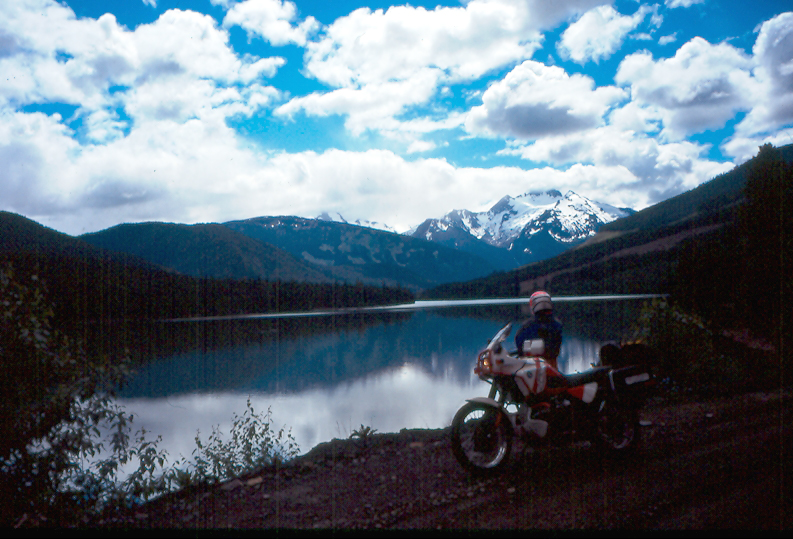
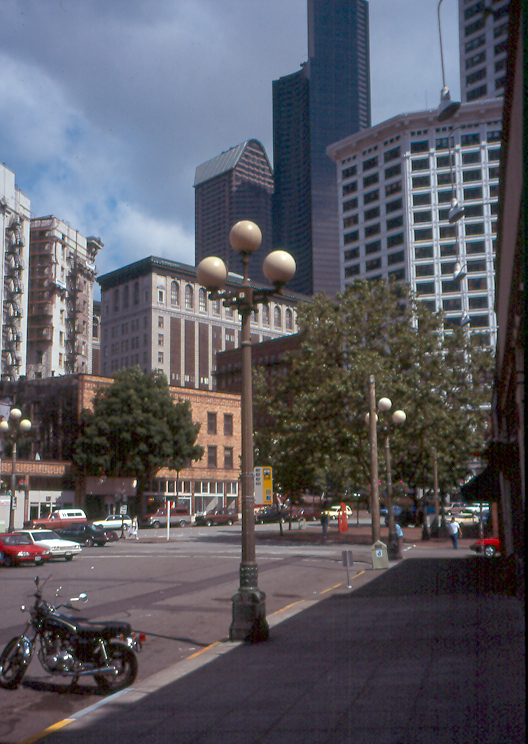
As we approached Prince William Sound, we had a close encounter with the ghost of the Exxon Valdez haunting each cove and inlet. Because of mankinds senselessness, millions of animal perished under the dark shadow of the oil spill. After Chernobyl this is the largest ecological disaster in our planet ́s recent history. Only now are the fauna and the flora coming back to life. In its waters the icebergs come loose from the majestic glaciers and move away into open sea with seals aboard taking their daily sun bath. That night, the same as every summer night, the sun kept shining.
We went back to Anchorage. We carefully packed the motorcycle in a pine crate with destination Colombia. After 10,000 miles it was time to say good by to paradise. We had bitten the forbidden fruit. We had tasted one of God ́s greatest gifts to man. We found out that Alaska is not only a place you visit. It is a feeling that you live and remember all your life.
Some say that once you go to Alaska you never come all the way back.
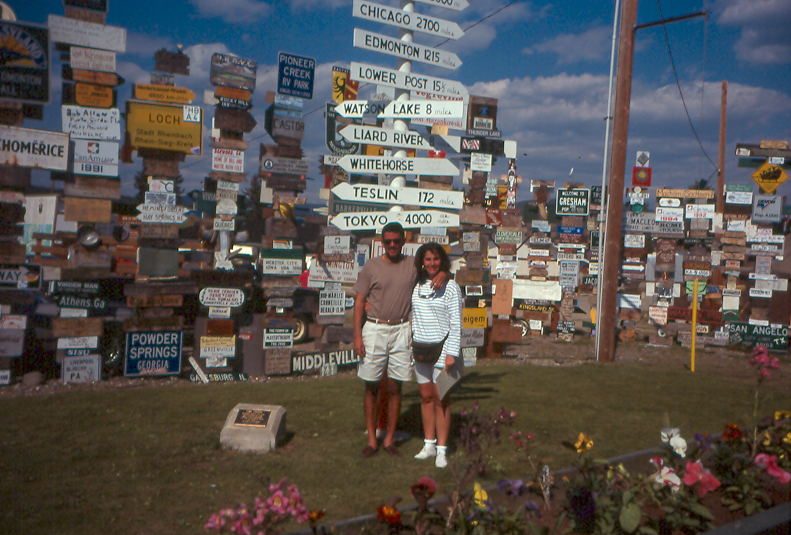
This adventure was contributed to Touratech USA by Miguel Lopez!
Country of birth : Colombia
Motorcycle: BMW R1200gs Adventure and BMW Paris Dakar pd 100
Age: 58
Trips: Alaska to Ushuaia in Tierra del Fuego on a BMW 1150 GSF, Madrid to Senegal via de Sahara desert, Mauritania and Mali, Northeastern USA, Western Europe,
Colombia, Ecuador , Peru, Chile and Argentina via de Amazon basin
Profession: Advertising and painter
Marital status: Divorced but with a beautiful girlfriend named Monica ( she didnt asked me to say that)!
Chidren: 2, one died in a motorcycle acciedent two years ago in Bogotá.
Actual status: happy if I have the chance to ride my motorcycle every day!!